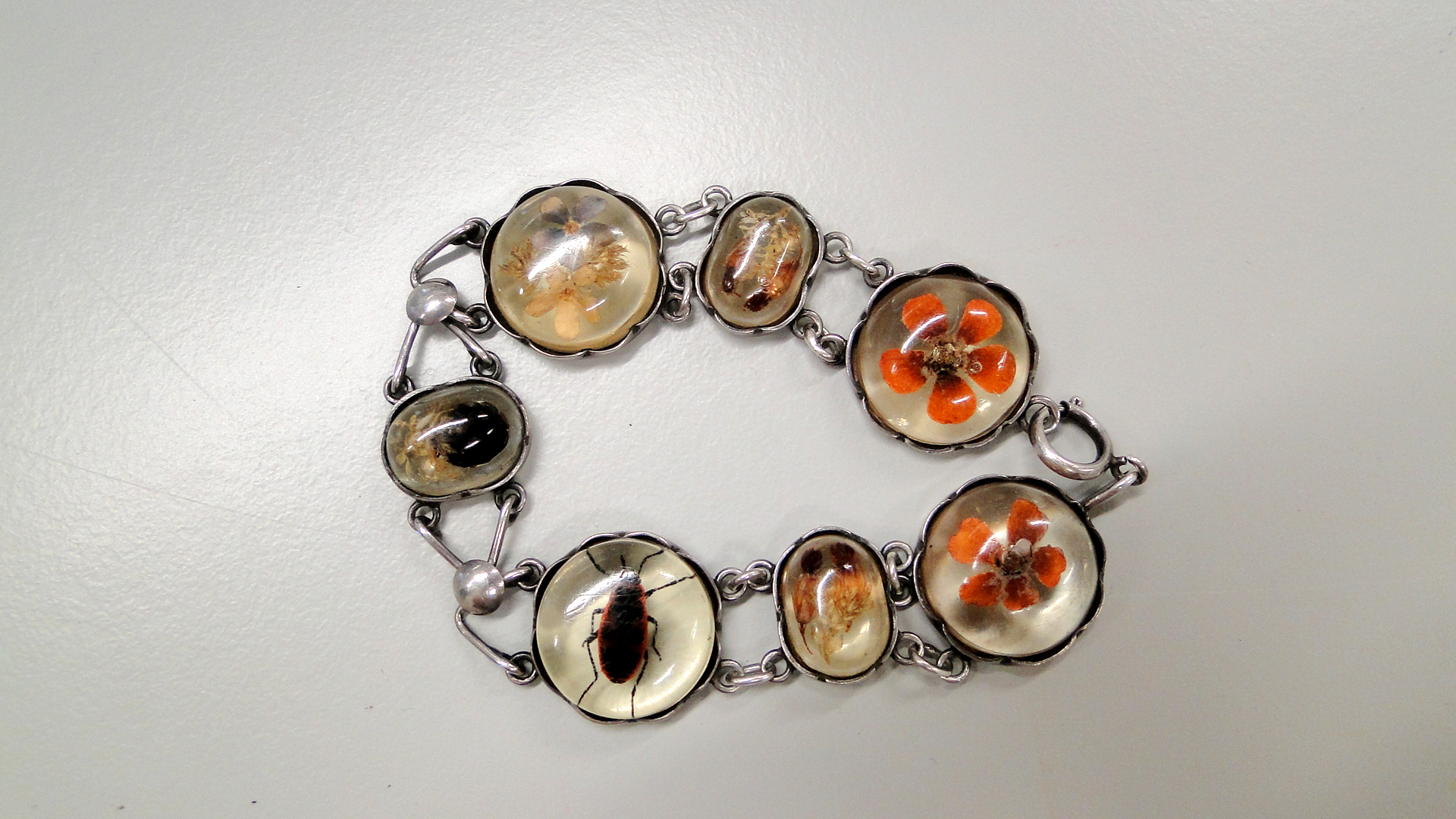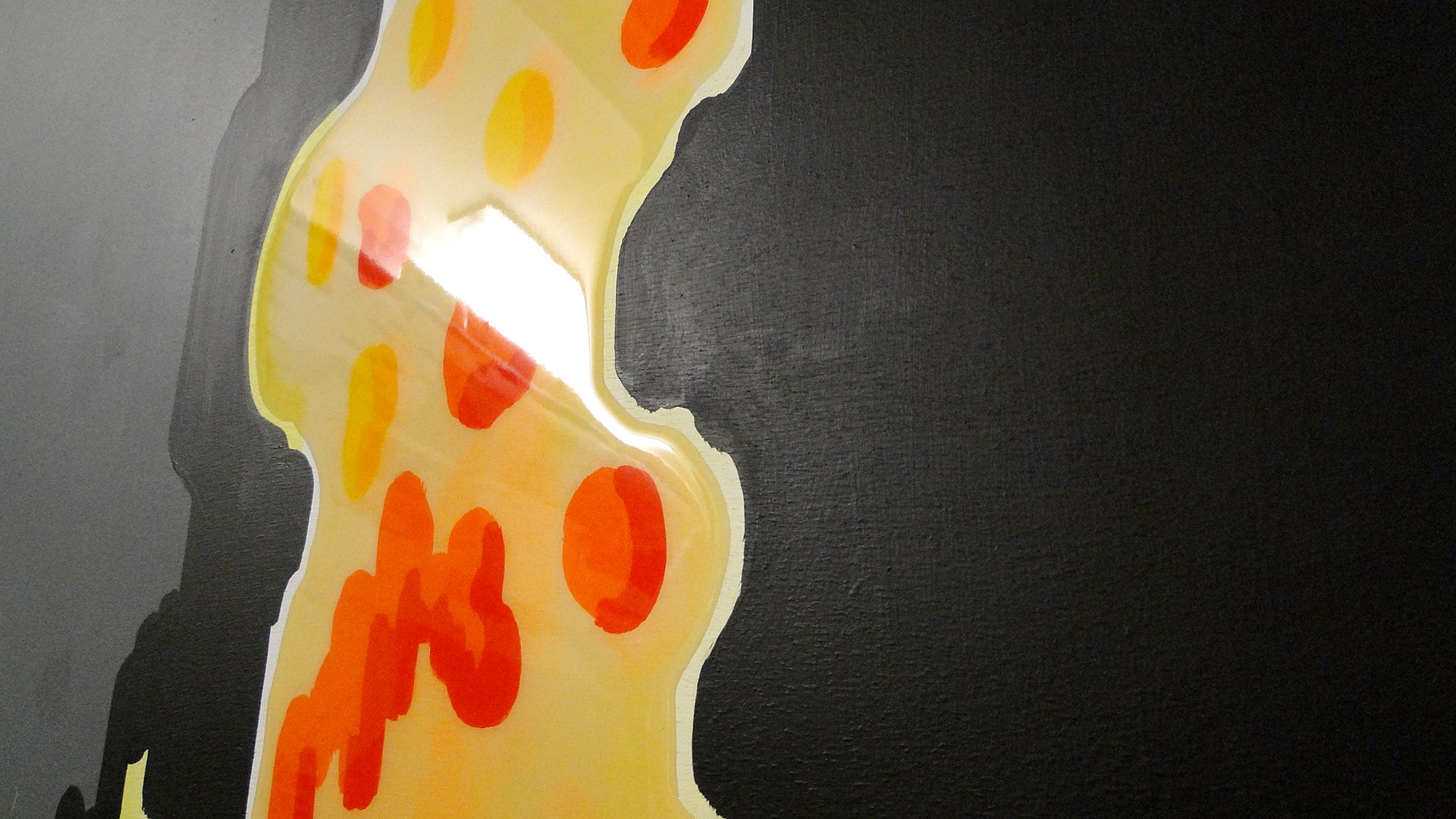Plastics
Epoxy (EP)
General information
Description
Epoxy (EP) (thermoset) is made from a two-component system of a liquid epoxy and a hardener or curative. When mixed they form a hard material. There is a wide range of epoxies. Depending on the epoxy group the solid epoxy has different properties. They generally have high strength and high thermal and chemical resistance. Fillers and colorants can be added to the epoxy mixture. Epoxy is an expensive plastic. It is a hard, cold material that can be transparant or opaque, clear or coloured. Transparant epoxies turn yellow rapidly, especially when exposed to UV radiation.History
Epoxy is known since the mid 1930s but large scale application developed only in the 1950s.Production, Application, Appearance
Since the 1950s epoxy is used mainly as industrial adhesive for metal, coatings, laminates, glass-fibre reinforced plastic and as casting resin. These uses are comparable to those of polyester (UP) which makes it difficult to distinguish these two plastics. In art works both are used frequently to embed objects or as material to make unique sculptures. Epoxies are more expensive and have slightly different properties than polyesters. Hence polyester is preferred by artists while epoxies are used for technical applications and as adhesive.Properties
Material properties
ThermosetDensity: 1.15-1.3 g/cm3
Melting point: 90-245°C
Glass transition temperature: 37-127°C (thermoplastic); 130-246°C (adhesives); 54.5-62°C (commercial)
Identification properties
Cell structure (foam): not applicableSmell: no particular smell
Touch: no particular touch
Sound: rigid produces a high clear sound
UV-radiation (when clear): fluoresces clearly green/yellow (is often somewhat yellow already)
Polarizing filters (for clear EP): not applicable
Degradation
Process
EP undergoes photo-oxidation by UV radiation and to a lesser extent by light, is sensitive to XXXXX and can attract dust and dirt due to its electrostatic character.Details
Wordt niet gezien als een probleemplastic.Symptoms
EP shows hardly any dimensional changes (expand or shrink). It does discolour and loses gloss. However this does not affect the mechnical properties. When components are mixed in the wrong proportion the surface can be tacky or become so in time. It can also get an 'orange-peel' appearance.Susceptibility
UV-radiation: HighLight: High
Oxygen/Ozone: Low
Temp: Low
RH: Medium
Preventive conservation
Recommendations
UV-RADIATION: keep below 10 µW/lm Exclude UV with filters or no-UV light sourceLIGHT: 1 just noticeable change in approx. 1 Mlx.h Limit light dose by reducing intensity and exposure time
OXYGEN / OZONE: ambient conditions
TEMP: common indoor conditions 10-30°C
RH: common museum conditions 40-60% RH fluctuations: setpoint ±10% or ±5% when allowing seasonal fluctations between 35-65%
EP is sensitive to hot water
Avoid exposure to dust
Other names
- Araldite
- D.E.R.
- D.E.H.




